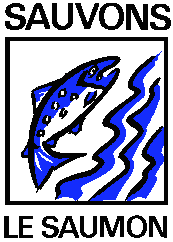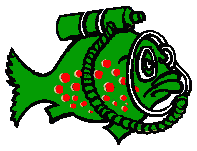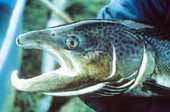
a survivor


Born in the clear waters of the upper basins, young salmon grow up in their birthplace during a period which spans from 1 to 3 years on the Allier. On the last spring of this period, they undergo a phenomenon, « smoltification », which will turn them, freshwater fish, into saltwater fish. Juveniles, now called « smolts », go down the river to the Atlantic to their feeding grounds. They stay off the coasts of Greenland and the Feroe Islands 1 to 4 summers, feeding on shrimps and little fish, gaining 4 to 6 pounds (2 to 3 kilos) a year. Then, moved by their breeding instinct which lead them back without fail to their native river, they begin their 4,000-mile long - 600 miles upstream the river - (6,000 km overall, 900 km upstream the river) journey back.
As they enter the river, salmon stop feeding and must use up their organismís reserves to go up the river, over no less than 20 important obstacles (sills, dams...), and elaborate their genital products. Nowadays, salmon need more than 6 months to reach their spawning grounds; it used to be 2 months when the river was not artificialized yet. When they enter the Loire mouth, Atlantic salmon are a slender silver fish, with a shining metal-like coat. Their size and weight vary greatly, according to the number of years they spent at sea: generally, they weigh between 10 and 20 pounds (5 to 10 kilos) and are 28 to 36 inch-long (70 to 90 cm-long). When they reach the spawning grounds where they were born to finally breed, they are worn-out and wasted by a fast which has been lasting for 6 to 14 months according to the date
they entered the estuary; they weigh no more than half or two thirds of their original weight.

Salmon bécard - Photo CSP
![]()
